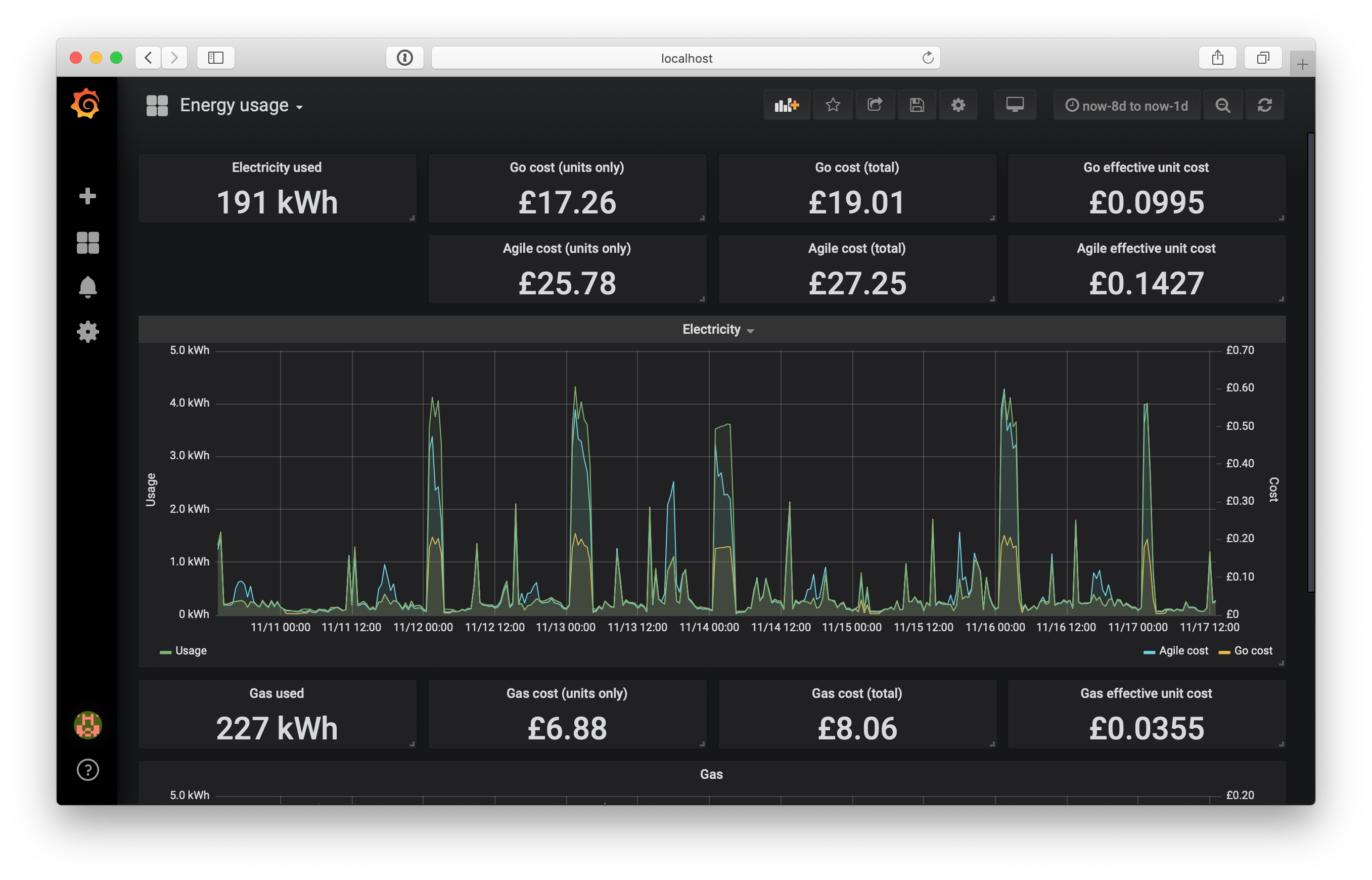Python tool for downloading energy consumption data from the Octopus Energy API and loading it into InfluxDB.
If you think you'd find this useful, but haven't switched to Octopus yet, then you can follow my referrer link https://share.octopus.energy/vivid-emu-468 and you'll receive a £50 bill credit, and so will I :)
In the process, additional metrics will be generated and stored for unit rates and costs as configured by the user. Suitable for two-rate electricity tariffs like Octopus Energy Go. Single rate gas readings are also retrieved and stored.
The secondary unit rate is specified with start and end times, and a timezone which is useful for the Go tariff where the discount rate changes with daylight savings time.
Included is an example Grafana dashboard to visualise the captured data.
An example Docker Compose file is included for easily running InfluxDB and Grafana.
Tested on macOS with Docker for Mac and Python 3.6. A Python virtualenv is recommended.
Install the Python requirements with pip
pip install -r app/requirements.txtCreate a configuration file octograph.ini customised with your Octopus
API key, meter details and energy rate information. This file should be in the
working directory where you run the octopus_to_influxdb.py command, or
can be passed as an argument.
python app/octopus_to_influxdb.py --helpBy default, energy data for the previous day will be collected. Optional from and to ranges may be specified to retrieve larger datasets. It is anticipated that the script will be run daily by a cron job.
docker-compose up -d # start InfluxDB and Grafana in Docker
python app/octopus_to_infuxdb.py --from-date=2018-10-20
open http://localhost:3000The default login credentials for Grafana are admin/admin, and you will be
prompted to set a new password on first login. You should then proceed to add
InfluxDB as a datasource with URL http://influxdb:8086 and database
energy if using the Docker version provided. The dashboard provided can
then be imported to review the data.
